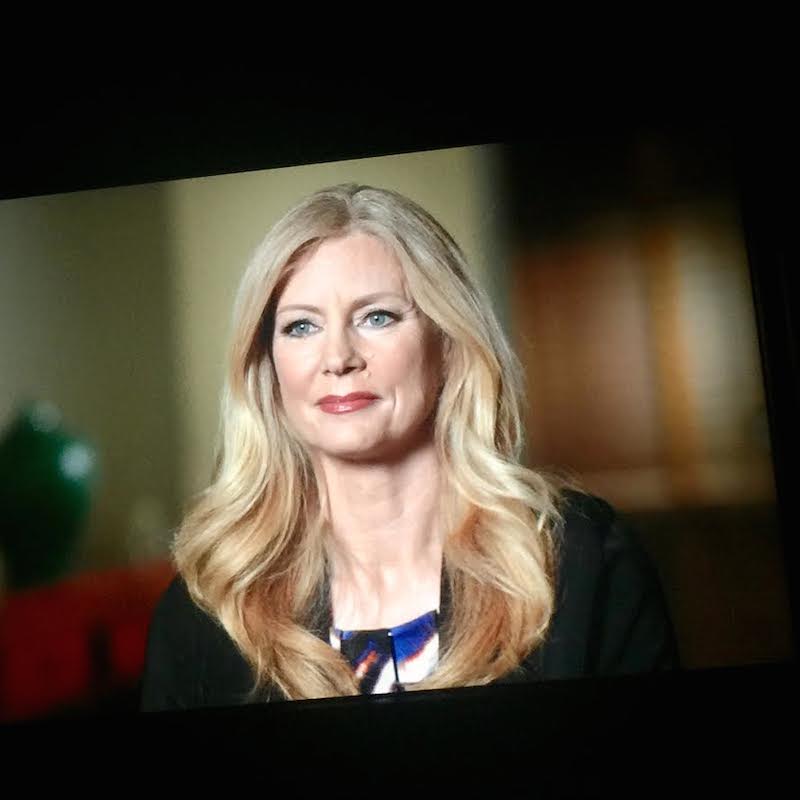The email on October 14, 2016, from a New York Times reporter, asked Wendy Walsh to call when she had a chance. Walsh was used to getting emails like these. As she walked to her car in the faculty parking lot at California State University, she called Emily Steel, who told Walsh she was investigating sexual harassment at Fox News.
Walsh thought that Steel wanted to interview her as an expert on the psychological impact of sexual harassment. A former journalist with a Ph.D. in clinical psychology, Walsh is a psychology professor with a radio show and three books. She is a frequent commentator, having appeared regularly on CNN and The O’Reilly Factor.
It was this latter credential that Steel wanted to talk about. What exactly was Walsh’s experience working with Bill O’Reilly? Did he ever treat her inappropriately?
Steel had no idea whether O’Reilly had sexually harassed Walsh.
ICYMI: Journalists, here’s what to do “when things start to get genuinely bad”
Since the start of their investigation in August 2016, Steel and reporting partner Michael Schmidt had uncovered five O’Reilly sexual harassment settlements totalling $13 million. They had contacted dozens of women, but those who had experienced O’Reilly’s sexual harassment refused to speak to them on the record, or at all. They had been silenced, either legally—due to confidentiality agreements in their settlements—or figuratively, out of fear of retaliation. Others were afraid of losing their jobs or reputations.
Yet to tell this story as the reporters hoped, they would need a person who could tell her own narrative.
Perhaps, Steel wondered, O’Reilly’s abuse hadn’t been limited to Fox News staff. Maybe it extended to women who had been guests on his show, and could speak more freely. She searched IMDb for a record of all the women who had appeared as guests over the years. She watched footage of Walsh on The O’Reilly Factor, and saw that she had appeared often throughout 2013, and then disappeared. She wanted to know why. It turns out no other reporter had asked Walsh about O’Reilly.
Steel’s hunch and cold call ultimately would hold the key to toppling “the king of cable news.” But the reporter’s work gaining trust was just beginning.
Reporter and source spoke off-the-record at first. Walsh recalled the night in 2013 when she and O’Reilly met for dinner at his request. She was a frequent guest on his show, but over dinner, he offered her a lucrative position as a Fox News contributor. After dinner, he invited Walsh to his hotel suite, a proposition she refused. O’Reilly withdrew his contributor offer. Several months later, O’Reilly’s executive producer personally told Walsh that she would no longer appear on his show.
Walsh concluded by telling Steel, “I wasn’t an employee, but if I was, I would have sued him.”
“Really? Why?” Steel asked, as Walsh recalls. “Even job applicants can sue for sexual harassment. He basically dangled a $200,000 a year job in front of you and then took it away.”
TRENDING: A hidden message in memo justifying Comey’s firing
Walsh was stunned. She had no idea that what O’Reilly did to her was sexual harassment.
“I did what many women have learned to do,” Walsh tells CJR. “Minimize, acquiesce, and manipulate around the land mines.”
Still, she insisted on staying off the record. Steel followed up with Walsh for weeks, trying to change her mind. This was one of the hardest parts of the eight-month investigation, Steel says.
“We’d spend a lot of time thinking who is this person, what is their background, what can we say, what can we do to make them talk to us,” Steel says. “There’s no incentive for a lot of these people to talk.”
Steel called five times in October, Walsh recalls. “She’d call and say things like, ‘I know you’re still off the record, but I was wondering if you’ve remembered any other details?’”
Steel was friendly, says Walsh, and would listen to her radio show, discussing it during their calls.
Then one day, says Walsh, “She tells me, ‘You have to go on the record. We need a face.’ I said no, I don’t need this nonsense.”
On their next call, Steel told Walsh that she wanted to visit her in LA.

New York Times Reporter Emily Steel. Courtesy photo.
“I told her I had a Pilates class,” Walsh recalls. “Next thing she’s flying to LA. She gets a hotel right across from my Pilates studio, shows up next to my Pilates mat, and asks me to get coffee afterwards.”
This was in November, a few weeks after their first phone call. Over breakfast after Pilates, Steel made her case. “I told her that she doesn’t have a confidentiality agreement, and could have a powerful voice since she could talk on the record.”
Walsh was torn. Her friends, she says, told her she shouldn’t speak out. “They said it’s not worth it, you don’t need all this negative publicity,” Walsh tells me. “I won’t lie to you. I was absolutely terrified.”
But Steel’s instincts were right.
“She looked me straight in the eye and said, ‘These other women are silenced, gagged, and bound,’” Walsh recalls Steel saying, referring to the women with confidentiality agreements. “You’re the only one who can actually tell your story,” Steel told her.
RELATED: 11 images that show how the Trump administration is failing at photography
After breakfast, Walsh gave her blessing. Hers was the only on-the-record account from an accuser in a Times exposé that led more than 50 advertisers to abandon O’Reilly’s show, ultimately resulting in his ouster from Fox. The aftermath is still piling up, with the exit of former Fox News co-president Bill Shine and the potential breakdown of takeover negotiations between 21st Century Fox and the British broadcaster Sky.
Steel’s reporting not only resulted in O’Reilly’s firing, but exposed a pervasive culture of misogyny and sexual harassment enabled by Fox executives. It also empowered other women to come forward.
Walsh says her story would have remained untold, “if it hadn’t been for Emily Steel.”
Walsh and Steel spoke to CJR about how the story came together, and how they felt about its ripple effects.
The investigation began in the aftermath of the Roger Ailes sexual harassment scandal. Times editors assigned her and Schmidt to look at what happened in the case of Andrea Mackris, a former O’Reilly Factor producer whose 2004 case went public with lurid details of her former boss’s sexual harassment. Their goal at the time, Steel says, was simply to see what happened to Mackris, how Fox dealt with the situation, and what it could mean for the network. Over the course of their reporting, they came across other women who had accused O’Reilly of sexual harassment. So they investigated those cases and eventually realized how widespread the pattern had been.
TRENDING: Eleven newsletters to subscribe to if you work in media
Walsh still can’t believe the impact of her story. For years, her friends, agents, and coworkers told her, “this is to be expected when you’re a beautiful woman working in television,” or “this is what men do,” and that if she spoke out, she’d be blacklisted in the industry.
When she saw that advertisers were abandoning O’Reilly, Walsh says, “I just welled up in tears and was like, wow, real change is happening. I never really realized how little of a voice women had until I was given a voice.”
The woman who gave her that voice had been threatened by O’Reilly before. In February 2015, Steel was covering a different scandal, when O’Reilly was accused of lying about his reporting on the Falklands War. “I am coming after you with everything I have,” he told her when she called him for comment. “You can take it as a threat.”
Over the course of their investigation, Steel and Schmidt interviewed more than five dozen people and tried to talk to dozens more. The fact that just one woman was willing to go on the record underscores the fear these women faced, and the odds that were stacked against Steel and Schmidt in telling the story.
“She was putting puzzle pieces together, and the one thing she was missing was a source who would talk,” Walsh says of Steel. “She just started turning over stones, emailing women at Fox, going into old shows and YouTube and looking for a certain type. She sees me and thinks, Oh, she’s there, and now she’s not there.”
RELATED: Fox News journalists: Don’t stay silent amid Bill O’Reilly controversy
Walsh told me that she never would have spoken out if Steel hadn’t urged her to. She recently nominated Steel for the National Journalism Impact Award. She said she deserves a Pulitzer.
Steel is grateful, but insists that she didn’t do this alone, noting her reporting partner was there every step of the way.
While the details of the five sexual harassment settlements were important pieces of the story, two of them were already public, and it’s doubtful the Times would have published without a human being to build the story around, a woman willing to speak openly.
While Steel downplays her role in toppling O’Reilly, two women at the heart of the story—Walsh and Lisa Bloom, the attorney representing her and other O’Reilly accusers—insist Steel was crucial.
Steel’s hunch and cold call ultimately would hold the key to toppling “the king of cable news.” But the reporter’s work gaining trust was just the beginning.
Walsh and Bloom just returned from London, where they met with the British regulators who will decide the fate of Rupert Murdoch’s deal to acquire Sky. Walsh seemed encouraged by her meetings in London. Most encouraging, she says, was a call from former Labour party leader Ed Miliband, thanking her for her bravery.
She thinks someone else deserves the gratitude.
“Absolutely none of this would be happening without Emily Steel,” Walsh insists, comparing Steel to Erin Brockovich. “She is the beginning of this, and is continuing to follow it along. She is literally shaking up major business deals in the UK, and making government regulators do a major investigation. None if this would have happened if Emily hadn’t exposed the code of secrecy and hadn’t convinced me to speak.”
Steel, 33, who worked at the Financial Times and The Wall Street Journal before joining the Times in 2014, recoils from the idea of being a journalistic hero.
“The purpose of doing this reporting wasn’t to win awards, or to bring O’Reilly down, but to follow the facts and report a fair and accurate story,” she tells CJR. “It was about holding a person in power accountable and giving a voice to the people who had been silenced. There was a reason O’Reilly had paid millions of dollars to these women. To keep them from going public.”
During the eight months she spent on this investigation, Steel only covered two other stories in her beat. “We were so lucky that we had the support of our editors, that we had the time and the resources and the ability to keep digging and digging.”
Steel is still digging. She’s received dozens of messages from women across the country with stories of sexual harassment, and not only in the news industry. At a time when the president is a man who has been accused of sexual harassment and who boasted about harassing women, several readers have told Steel that these kinds of stories are more important than ever.
“Sexual harassment is illegal,” Steel says. “It’s against the law. And women deserve to be treated with respect in the workplace.”
Yardena Schwartz is a freelance journalist and Emmy-nominated producer based in Tel Aviv. Her work has appeared in The New York Times, Newsweek, Time, Foreign Policy, Haaretz, The Jerusalem Post, CBS News, NBC News, and MSNBC. Previously, Yardena was a producer at NBC News in New York.

